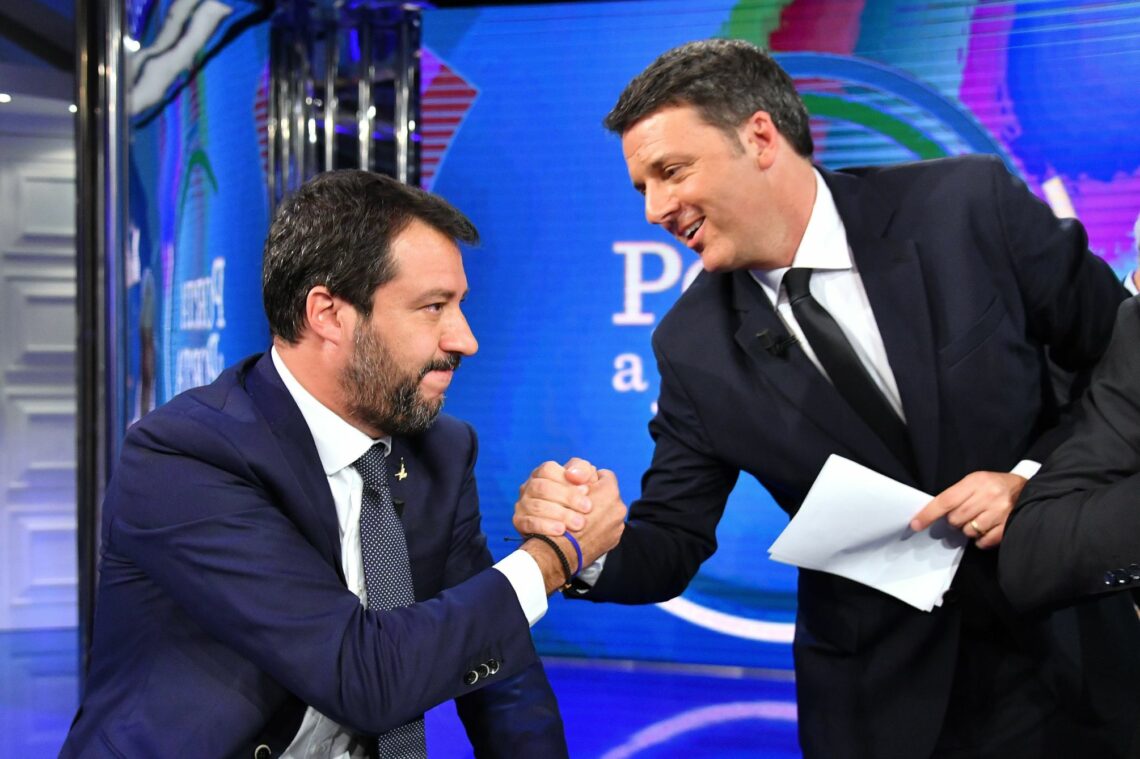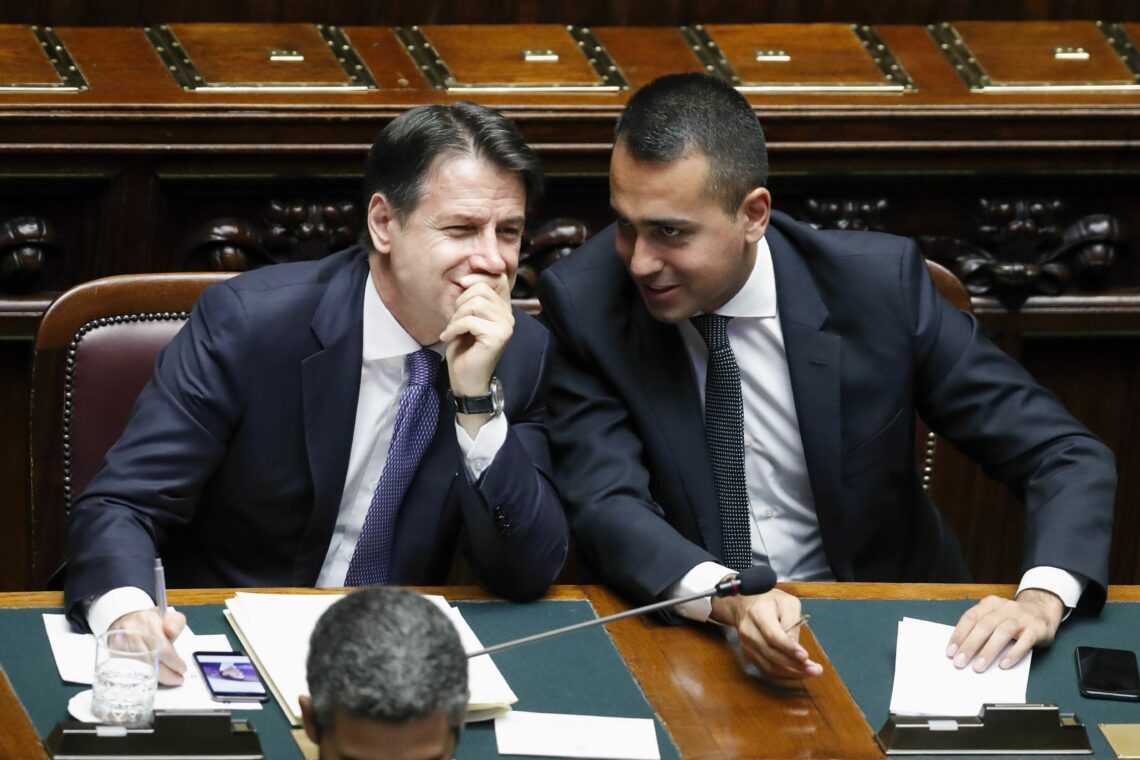Salvini’s tactical mistake puts the left in power
After the 2019 European elections, Matteo Salvini and his party were riding high. Many expected he would call for new elections. When he finally did, parties on the left moved against him. With a savvy political move from former Prime Minister of Italy Matteo Renzi, the center- and far-left have taken control of the government.

In a nutshell
- Matteo Salvini’s call for new elections was a miscalculation
- Leftist parties formed a new coalition government without him
- Matteo Renzi is maneuvering to gain the centrist vote
Earlier this year, Italy was seen as a political test case: a major European country ruled by a government coalition composed of far left-wing and right-wing parties. Now the country has a more distinctively left-wing executive, in which the establishment left and the “populist” left, completely at odds until recently, called a truce. What happened?
Italian politics is tricky and sometimes incomprehensible – even for Italians themselves. This time, the change can partly be explained by poor maneuvering from Matteo Salvini, leader of the nationalist right, and partly by a brilliant tactical move from former Prime Minister Matteo Renzi. The tumultuous changes in Italian politics are unlikely to stop soon.
Salvini’s choice
On May 27, just after the European elections, Mr. Salvini was riding high. Analysts predicted he would call for early national elections and land the big prize: control of the government. His party, known as Lega (the League) saw its share of the vote jump from 17 percent in the 2018 national elections to 34 percent just a year later. The time seemed ripe for Mr. Salvini to reshape parliament according to the popular mood. Indeed, Lega’s coalition partner, the Five Star Movement (M5S), had essentially experienced the opposite electoral fate: its share of the vote dropped from 32 percent to 17 percent.
To hold elections only a year after the formation of a new parliament was a step too far for Italians.
Rather than acting right away, Mr. Salvini chose to wait a couple of months. Finally, he made his move after a vote in the Italian Senate that rejected a motion by M5S to block an alpine high-speed rail link with France (the project was supported by Lega and most other parties). The Lega leader claimed that such an important divergence within the government warranted calling for an end to the coalition and going to early elections.
The justification was dubious: the two parties have long had profound disagreements on infrastructure spending, with M5S taking a more environmentalist approach and Lega favoring extensive infrastructure spending. Yet the two sides managed to coexist in government for a year, eager to compromise as much as possible without overly angering their electorates.
Mr. Salvini’s move was a miscalculation. To hold elections only a year after the formation of a new parliament was a step too far for Italians. Many parliamentarians feared for their posts. The number of M5S representatives was due to decrease sharply, a particularly troublesome scenario for that party because of the limit of two terms that it had adopted for its representatives.
Senators and members of parliament from the Democratic Party feared for their future as well. Most of them were picked by the former party secretary, Mr. Renzi. He had been replaced by Nicola Zingaretti in March. Moreover, former Prime Minister Silvio Berlusconi’s Forza Italia was likely to be removed from parliament. Its popular support had collapsed.
The rush toward an early election in Italy therefore screeched to a halt. Mr. Salvini seemed to have the support of the people, but that backing proved useless in the face of the parliamentary machinery. In early August Mr. Renzi, who had a reputation as M5S’s archenemy, gave an interview in which he opened the door to a new alliance between his party and the left-wing movement.

Mr. Renzi’s offer was credible precisely because he was the most unlikely of peacemakers. For years, he had been the number-one target of M5S. That he was reaching out to them now showed the divide between his party and theirs could be bridged. The alliance between the Democrats and the M5S was thus forged under the same prime minister, Giuseppe Conte, who previously led the coalition between M5S and Lega.
The new government had its first success in landing former Prime Minister Paolo Gentiloni the post of European Commissioner for Economic and Financial Affairs, a position which Rome sees as crucial to its interests. It is now expected to appoint some other 400 people to executive positions in various bodies, from independent authorities to state-controlled businesses. This has whetted quite an appetite among Italian politicians for a well-functioning government.
The Democrats and the M5S will find common ground on issues palatable to the global left: environmentalism and raising taxes on the rich. As opposed to the Russia-friendly Lega, both parties strongly favor Italy’s European Union membership. They are also considered more likely to keep their promises on public finance issues.
An unexpected protagonist
There is a joke that goes: “An empty taxi arrived at 10 Downing Street and Clement Attlee got out.” It never quite fit for Attlee, perhaps the most influential one-term prime minister in British history. But switch “10 Downing Street” with “Palazzo Chigi” (the office of the Italian prime minister) and “Clement Attlee” with “Professor Giuseppe Conte” (Italy’s prime minister since July 2018), and the punchline works like a charm.
Mr. Conte has gained clout in Italy and abroad, while his approval rating is higher than other government ministers’.
When Professor Conte became prime minister, he was a political nobody. Outside legal circles, he was virtually unknown – certainly by the Italian public at large, but also by most of the movers and shakers in Rome, and this despite having chaired the governing body of administrative judges in Italy.
That he was on few people’s political radar was his best quality in the eyes of the flamboyant leaders of Lega and M5S – Mr. Salvini and Luigi Di Maio, respectively. As they were cobbling together a coalition government between their two very different parties, neither Mr. Salvini nor Mr. Di Maio could hope to sit at the head of government. For once their interests aligned: they had to pick someone unlikely to overshadow them.
Yet Mr. Conte has continually gained clout in Italy and abroad. His approval rating has regularly come in higher than other government ministers’, due to a personal style that seems at odds with his own principles. Soft-spoken and calm, Mr. Conte looks the opposite of a “populist,” though he has at times claimed the label for himself.
His first term was lackluster. Whatever policies his government undertook, they were coming out of the two supporting parties’ agendas, with the prime minister mostly playing the role of notary. But beware the quiet man. Mr. Conte has quickly gained influence on the international stage and proved very capable of cultivating friendships with powerful leaders, from German Chancellor Angela Merkel to United States President Donald Trump.
Moreover, he has established a reputation as a moderating influence in the government, countering the excesses of the parties, despite his ties with M5S. When Mr. Salvini called for an end to the first Conte government, the prime minister kept a cool head. He did not resign on the spot but instead brought the crisis to parliament. In his speech to the Senate, he delivered a harsh attack on Mr. Salvini. That speech made him a viable candidate to lead a new government coalition and gained him new admirers on the left.
Mr. Renzi has staked his claim to the political center, which is empty and therefore offers an opportunity.
In that, Mr. Conte succeeded. Some think he now wants to create an independent, centrist party. With his total lack of ideology and his strong command of the vocabulary of moderation, he is the perfect centrist in the Italian, Christian-Democratic tradition. Such speculation may explain a puzzling move by Mr. Renzi. After having midwifed the new government, the former prime minister left his own party, the Democrats, to establish a centrist movement. Though his new party currently has negligible support, at only 3 percent, Mr. Renzi has staked his claim to the political center.
The rationale is clear. Mr. Berlusconi’s Forza Italia is now a relic, bereft of the charisma of its founder. Some of its voters are drifting to the right, joining the ranks of Lega. Others are still looking for a party to support. At the same time, the Democratic Party will likely start a race to the left with M5S, leaving behind some of its more moderate supporters. The center is empty, and therefore offers a political opportunity.
But Mr. Renzi has given little justification for his choice, and so far has not articulated a more centrist message. His move will allow him to wield a stronger influence on the Conte government, but there is plenty of doubt as to whether it will have any electoral appeal.
Scenarios
The loser of Italian politics over the last few months is the ostensible champion of the people: Mr. Salvini. His poor tactical choices may not reduce his popular support, though they have certainly undermined his reputation as a strong political leader.
The new coalition, on the other hand, seems to have found some acceptance from European governments. Mr. Salvini was seen as a far more dangerous enemy of the European Union than M5S. Containing him was a crucial driver behind the formation of the new government.
It is questionable how successful the Democrats and M5S can be in achieving that goal. In November, regional elections will take place in Calabria, Emilia-Romagna and Umbria. On the local level, it is still unknown how much of the vote the Democrats-M5S coalition will be able to garner.
Nationwide, the biggest battle is being waged over the electoral law. The 2018 vote took place under a mixed system, in which 37 percent of seats were allocated using a first-past-the-post electoral system while the remaining seats, save for a few exceptions, are chosen proportionally. The consensus is that an electoral law leaning even more toward proportional representation would keep Mr. Salvini from ever entering government again. But that may not be the case.
In a proportional representation system, people vote for the candidates they consider more congenial: a cabinet will be formed by and within the parliament. In a majoritarian system, people are more likely to vote for a party they think can actually lead the country. There is no reason why Mr. Salvini would benefit from the latter system and not from the former. He is pushing for a more majoritarian electoral law himself, having understood that Italians like to pick their government and not only their representatives. This battle will not do him any harm, even if he loses it.
Centrists like Mr. Renzi (and what is now left of Mr. Berlusconi’s party) find a pure proportional representation system more palatable, as they hope it might empower smaller parties to become the kingmakers of national government. They should perhaps consider that for now, only M5S has been able to make deals with both the right and the left. Now, even the definition of the political “center” is evolving.






